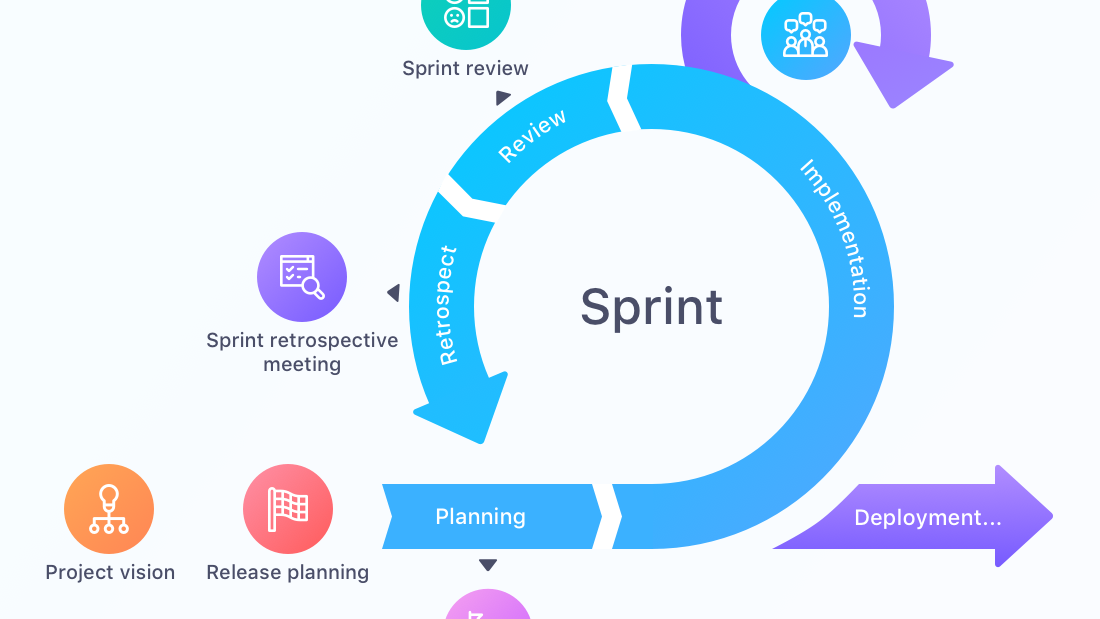Scrum Sprint
- Scrum Sprint
- Cancelling a Sprint
- Sprint Goal
Table of Contents
Scrum Sprint
So what is the definition of a Scrum Sprint? According to the Scrum Guide, the heart of Scrum is a Sprint, a time-box of one month or less during which a “Done”, useable, and potentially releasable product Increment is created. Sprints have consistent durations throughout a development effort. A new Sprint starts immediately after the conclusion of the previous Sprint.
Scrum Sprints contain and consist of the Sprint Planning, Daily Scrums, the development work, the Sprint Review, and the Sprint Retrospective.
During the Scrum Sprint:
- No changes are made that would endanger the Sprint Goal;
- Quality goals do not decrease; and,
- Scope may be clarified and re-negotiated between the Product Owner and Development Team as more is learned.
Each Scrum Sprint may be considered a project with no more than a one-month horizon. Like projects, Sprints are used to accomplish something. Each Sprint has a goal of what is to be built, a design and flexible plan that will guide building it, the work, and the resultant product increment.
Scrum Sprints are limited to one calendar month. When a Sprint’s horizon is too long the definition of what is being built may change, complexity may rise, and risk may increase. Sprints enable predictability by ensuring inspection and adaptation of progress toward a Sprint Goal at least every calendar month. Sprints also limit risk to one calendar month of cost.

Cancelling a Sprint
A Sprint can be cancelled before the Sprint time-box is over. Only the Product Owner has the authority to cancel the Sprint, although he or she may do so under influence from the stakeholders, the Development Team, or the Scrum Master.
A Sprint would be cancelled if the Sprint Goal becomes obsolete. This might occur if the company changes direction or if market or technology conditions change. In general, a Sprint should be cancelled if it no longer makes sense given the circumstances. But, due to the short duration of Sprints, cancellation rarely makes sense.
When a Sprint is cancelled, any completed and “Done” Product Backlog items are reviewed. If part of the work is potentially releasable, the Product Owner typically accepts it. All incomplete Product Backlog Items are re-estimated and put back on the Product Backlog. The work done on them depreciates quickly and must be frequently re-estimated.
Sprint cancellations consume resources, since everyone regroups in another Sprint Planning to start another Sprint. Sprint cancellations are often traumatic to the Scrum Team, and are very uncommon.
Sprint Goal
The Sprint Goal is an objective set for the Sprint that can be met through the implementation of Product Backlog. It provides guidance to the Development Team on why it is building the Increment. It is created during the Sprint Planning meeting. The Sprint Goal gives the Development Team some flexibility regarding the functionality implemented within the Sprint. The selected Product Backlog items deliver one coherent function, which can be the Sprint Goal. The Sprint Goal can be any other coherence that causes the Development Team to work together rather than on separate initiatives.
As the Development Team works, it keeps the Sprint Goal in mind. In order to satisfy the Sprint Goal, it implements functionality and technology. If the work turns out to be different than the Development Team expected, they collaborate with the Product Owner to negotiate the scope of Sprint Backlog within the Sprint.
ScrumAA articles are derived from the Scrum Guide
Go back to the blog’s page for more articles.
You can also check our Wiki page for more additional information regarding Scrum knowledge in general and definitions by clicking this link.

